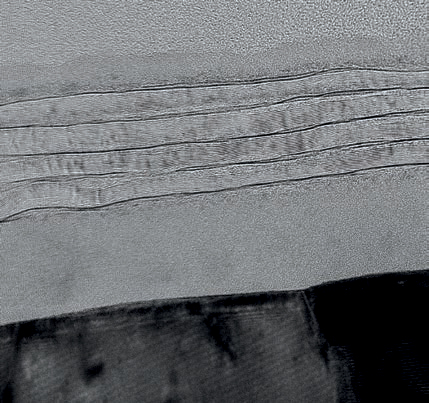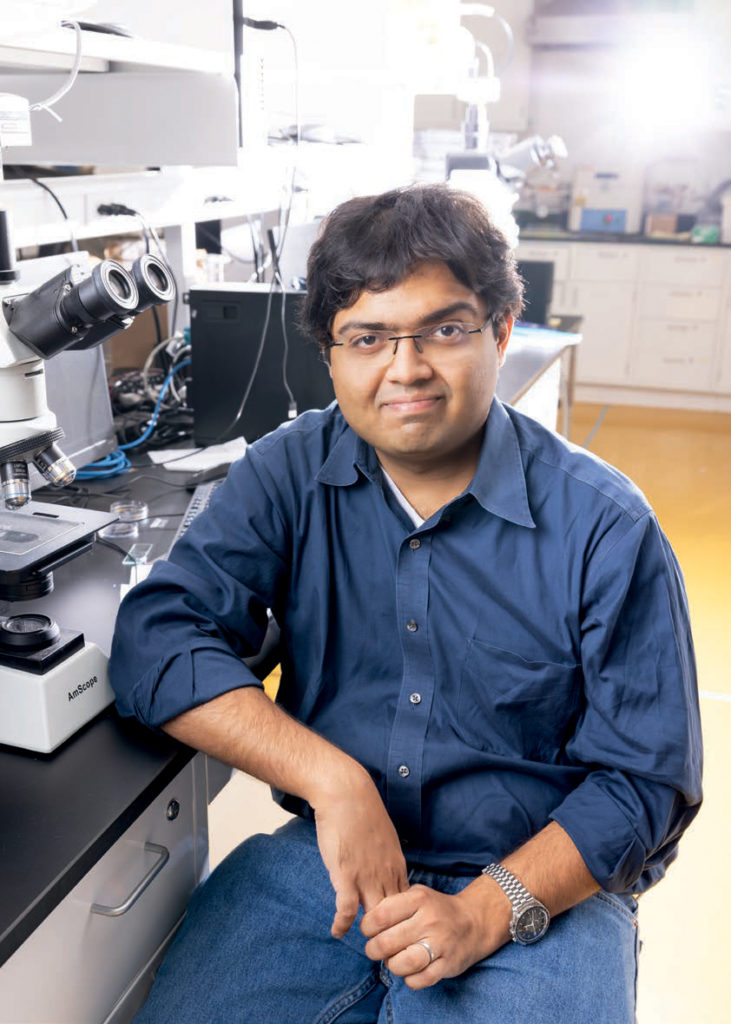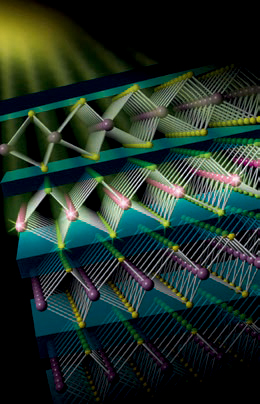
IN Question
How Will Photonics Change the World?
Since the Intel 4004, developed in 1971, computer microprocessors have gotten progressively faster and more powerful. There’s a simple reason: In the following decades, manufacturers found ways to make transistors — the basic building blocks of a computer — exponentially smaller, doubling the number that fit onto a processor roughly every two years.
That growth rate, known as Moore’s Law, has been gospel in the electronics world for more than half a century, but it may be nearing its end, says Deep Jariwala, Assistant Professor in Electrical and Systems Engineering. With state-of-the-art transistors already smaller than a hundred silicon atoms across, it will eventually be impossible to go any smaller, creating a minor crisis for engineers: If silicon is already pushed to its limit, how can they improve upon the performance of electronics in the future?

Deep Jariwala’s research lies at the intersection of solid-state opto-electronics and emerging low-dimensional materials. Specifically, he combines new techniques to assemble, grow and integrate nanostructured materials, including molecular materials with state-of-the-art nanofabrication methods to create novel electronic and photonic devices. He uses spatially and spectrally resolved current and photon spectroscopy as well as scanning probe techniques to understand charge and energy transport mechanisms across atomically abrupt and hybrid interfaces which lie at the core of modern semiconductor opto-electronics.
Light-Based Computation
Jariwala believes that the answer could lie in photonics, a branch of science that has produced some of our most commonly used devices, like LED lightbulbs, ultra-thin TV screens and high-definition smartphone displays. Over the next few decades, it could dramatically alter the way computer chips are built. Instead of using electrical current, photonics research may one day lead to an entirely light-based chip, where all logic is done with optical components.
“That’s kind of the pipe dream for a lot of people in my field,” Jariwala says. “In theory, the only electronic component would be a powerful laser sitting beside a computer. Instead of plugging the computer into an outlet, you’d plug it into the laser using a fiber optic cable.”
Creating a light-based computer, however, will first require developing entirely new mate- rials. Unlike optics, a transistor can act as a sort of electronic valve that throttles or amplifies a signal. Connect a few of these “valves” in the right way, and they can perform basic computer logic. While existing optical components can stop or even split a light signal, they can’t easily amplify it, making them far less useful for computation. There’s also an issue of size, Jariwala notes: Silicon components can be reduced to a near-atomic scale, but fiber optic channels, or “wave guides,” can’t yet shrink beyond a certain limit. Once they become smaller than the wavelength of light they’re carrying, they start to diffuse the light’s energy, potentially hindering any transmission of data.

Jariwala’s research group explores the optical and electronic properties of superlattices. Composed of layers of materials thin enough to be effectively two-dimensional, these structures enable photons and electrons to interact in otherwise impossible ways, opening the door for next-generation computer chips, solar panels and sensors.
Speeding Data
Although challenges like these are formidable — and won’t be solved anytime soon — Jariwala thinks engineers could reach a more modest goal in the near future. While tiny silicon transistors would still do the heavy lifting within a computer processor, optics could be used to shuttle data between different points on the chip at a much higher speed than is currently possible.
This concept, called “hybrid electronic photonic computation,” is already underway with major chip manufacturers, meaning that ultra-fast processors that incorporate light transmission could be sold within the next decade. Once commercially available, these hybrid chips would be a major boon to high-performance computers, which are used to run enormous climate models, process huge data sets and recognize the contents of images. Shuffling data around at the speed of light would not only enable faster computation, but more energy-efficient processors as well, saving time and reducing the cost of keeping the computer running.
In the meantime, Jariwala is already exploring other, more immediate uses for optical electronics. He and his lab are creating ultra-thin materials called “superlattices,” multi-layered sandwiches of materials that are each just a few atoms tall. Despite the material’s incredible thinness, Jariwala can effectively produce or manipulate a beam of light simply by changing its shape. This trait could lead to vast improvements in light sensors, like those used in cameras or solar panels, as well as new displays and other technologies like light modulators.
“Photonics has already enabled things that have transformed our lives, like new light sources, sensors and high-speed internet connections,” says Jariwala. “In terms of computing using photons, work within the field may not yet be visible to a broad cross-section of society, but it will definitely add constructively to everyone’s lives moving forward.”
Text by David Levin / Photo of Deep Jariwala by Colin Lenton
